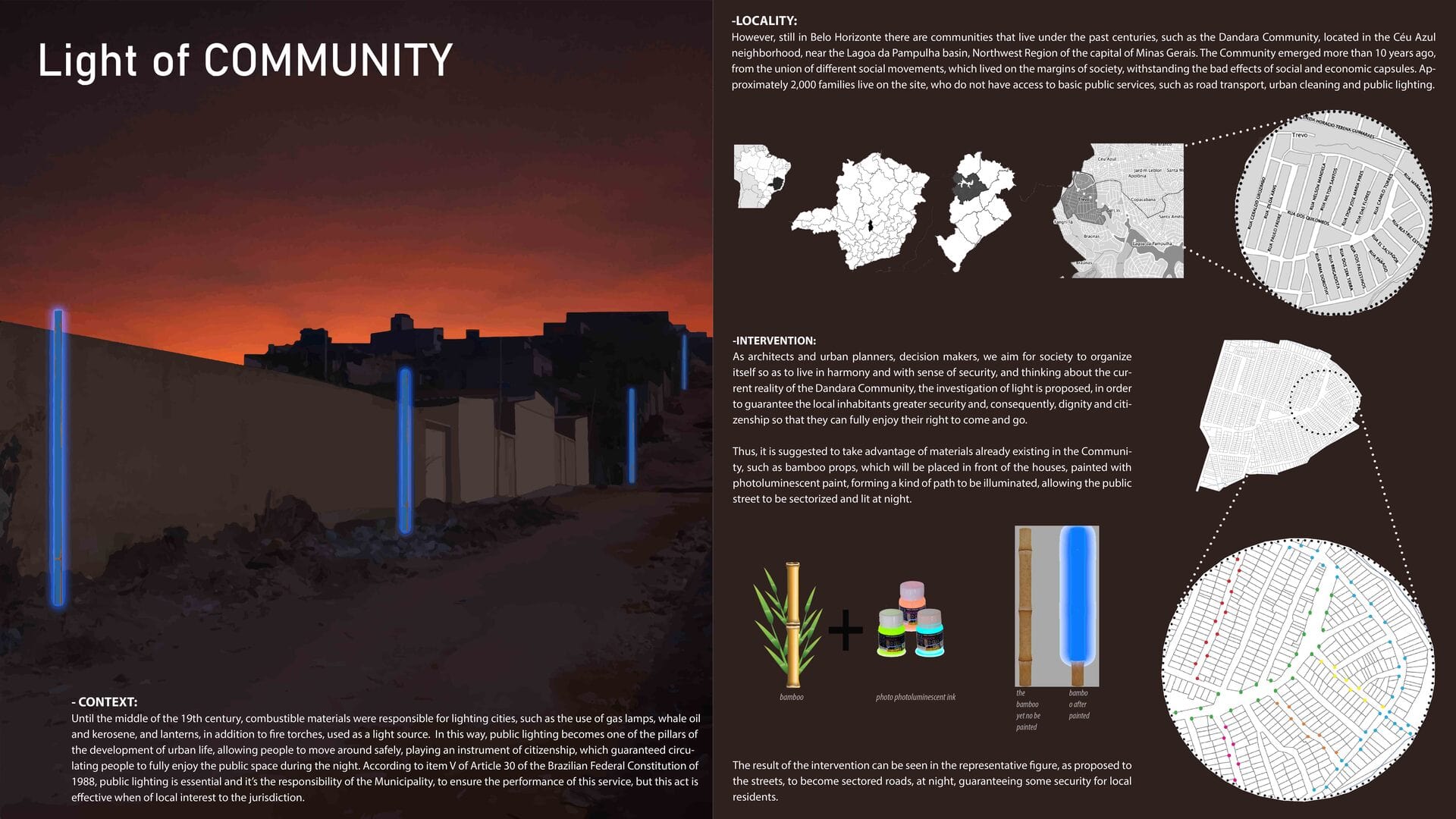Project Description
Until the middle of the 19th century, combustible materials were responsible for lighting cities, such as the use of gas lamps, whale oil and kerosene, and lanterns, in addition to fire torches, used as a light source. In this way, public lighting becomes one of the pillars of the development of urban life, allowing people to move around safely, playing an instrument of citizenship, which guaranteed circulating people to fully enjoy the public space during the night. With the advancement of technology, more efficient methods and instruments for providing lighting to a given location emerge. In 2017, Belo Horizonte becomes the first capital to participate in the Public-Private Partnership, in order to replace the city's light points with LED luminaires, which have a longer useful life, also contributing financially. According to item V of Article 30 of the Federal Constitution of 1988, public lighting is essential and it’s the responsibility of the Municipality, to ensure the performance of this service, but this act is effective when of local interest to the jurisdiction. However, still in Belo Horizonte there are communities that live under the past centuries, such as the Dandara Community, located in the Céu Azul neighborhood, near the Lagoa da Pampulha basin, Northwest Region of the capital. The Community emerged more than 10 years ago, from the union of different social movements, which lived on the margins of society, withstanding the bad effects of social and economic capsules. Approximately 2,000 families live on the site, who do not have access to basic public services, such as road transport, urban cleaning and public lighting. Thinking about the current reality of the Dandara Community, the investigation of light is proposed, in order to guarantee the local inhabitants greater security and, consequently, dignity and citizenship so that they can fully enjoy their right to come and go. The locality lacks public lighting, as it is not present throughout the community, making residents feel vulnerable to public space at night. In the locality there are workers who return to their homes already in the nightfall, as well as those who leave for work at dawn, children and teenagers who study in the morning and need to walk to the nearest bus stop, a journey that lasts about 2 kilometers, depending on the location of the residence in the Dandara Community. It’s known that children, young people, adults and the elderly go a long way, without the slightest lighting conditions, without ensuring adequate safety. It is evident that even though this basic infrastructure is essential to living in cities, in the community of study there is no such contemplation, which takes away from the population the right to fully inhabit the city. Thus, it is suggested to take advantage of materials already existing in the Community, such as wooden props, which will be placed in front of the houses, painted with photoluminescent paint, forming a kind of path to be illuminated, allowing the public street to be sectorized and lit at night. The photoluminescent ink has a pigment based on Strontium Aluminate (SrAl), being activated by the chemical element Európium (Eu), which when receiving sunlight or even artificial light, reproduces its own shine for a certain period. In this way, the props, made of wood, receive the painting, in order to sectorize and demarcate the local route, not using electricity for this. The luminance duration depends on the amount of pigment used in the composition, as well as the number of coats and preparation of the paint application surface. It is thought to use different colors, such as blue, green, red, yellow, orange and purple, and in each street use a tint, in order to demarcate the local roads. It is suggested the application of Photoluminescent Polyurethane Paint, which is made of vinyl resin, having better adhesion, easy application and weather resistance. Due to the fact that the intervention is in an external environment, the use of this oil-based paint is defined, in order to prevent the appearance and proliferation of fungi, which are biocides for waterbased paints. The props need to be properly prepared for painting, requiring the removal of any old elements attached to the surface, such as old paintings. Subsequently, if there are deformations on the exterior, wooden finishing pasta should be applied in order to recover the deformations, then the struts should be sanded, ensuring uniformity on the surfaces. Finally, after these precautions, the material is able to receive the painting. It is proposed that the struts should be uniformly placed on the public road every 4 meters on the boundary of the lot and be about 3 meters high, with a diameter of 20 centimeters. To fix these in the ground, a depth of at least 1 meter should be excavated, thus ensuring the stability of the struts.
